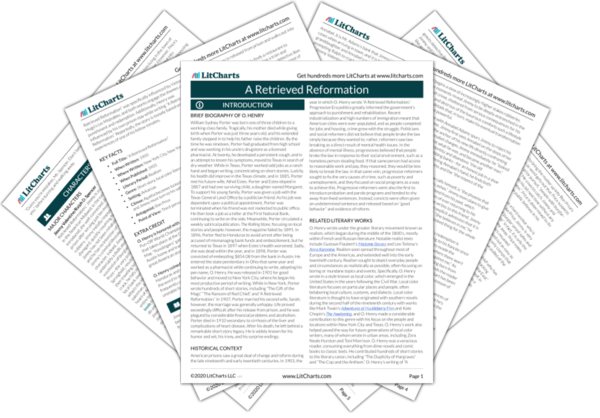Welcome to the LitCharts study guide on O. Henry's A Retrieved Reformation. Created by the original team behind SparkNotes, LitCharts are the world's best literature guides.
A Retrieved Reformation: Introduction
A Retrieved Reformation: Plot Summary
A Retrieved Reformation: Detailed Summary & Analysis
A Retrieved Reformation: Themes
A Retrieved Reformation: Quotes
A Retrieved Reformation: Characters
A Retrieved Reformation: Symbols
A Retrieved Reformation: Literary Devices
A Retrieved Reformation: Theme Wheel
Brief Biography of O. Henry

Historical Context of A Retrieved Reformation
Other Books Related to A Retrieved Reformation
Key Facts about A Retrieved Reformation
- Full Title: “A Retrieved Reformation”
- When Written: 1903
- Where Written: New York City, New York
- When Published: 1903
- Literary Period: Realism
- Genre: Short story, local color literature
- Setting: Arkansas
- Climax: Agatha becomes locked in her grandfather’s safe, and Jimmy must turn to his safecracking skills to free her.
- Antagonist: Ben Price
- Point of View: Third-person omniscient
Extra Credit for A Retrieved Reformation
O. Henry is honored with a yearly “pun-off.” The O. Henry Pun-Off World Championship is a spoken word competition that takes place at the O. Henry Museum in Austin, Texas each May. “Punslingers” gather in the backyard of O. Henry’s former Austin home and trade witty remarks as a way to remember the great American storyteller.
O. Henry coined the term “banana republic.” While living in Honduras and writing Cabbages and Kings, O. Henry invented the word to describe the setting of his stories. The term is now frequently used to describe small Latin countries with an unstable farming-based economy.







